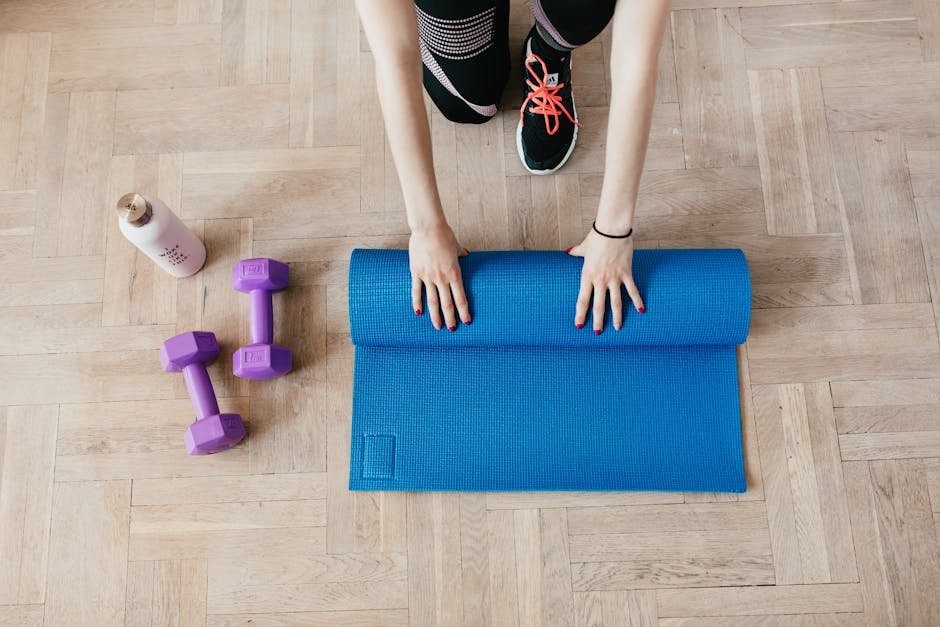Top 4 Reasons Pilates Studio Workouts Are Ideal for Injury Prevention
Step into a world where strength and flexibility merge seamlessly, where mindfulness meets movement, and discover the transformative power of Pilates studio workouts in injury prevention.
1. The Mind-Body Connection Strengthened Through Pilates
Pilates studio workouts go beyond physical exercise; they foster a profound mind-body connection. By focusing on breathing techniques and precise movements, Pilates encourages practitioners to be present in the moment, enhancing mindfulness and reducing stress levels. This heightened awareness of the body's alignment and movement patterns not only improves performance during workouts but also carries over into daily activities, promoting better posture and reduced risk of injury.
Moreover, the emphasis on core engagement in Pilates exercises helps individuals develop a deeper understanding of their body mechanics. Strengthening the core muscles not only stabilizes the spine but also improves overall body coordination, leading to better control of movements and reduced strain on muscles and joints. The mind-body symbiosis cultivated through Pilates empowers individuals to move with intention and grace, reducing the likelihood of injuries both in and out of the studio.
By integrating breath with movement, Pilates studio sessions become a moving meditation that not only challenges the body but also calms the mind. This synchronization of breath and muscle engagement promotes mental clarity, relaxation, and focus, creating a harmonious balance between physical and mental well-being. The mind-body connection established in Pilates transcends the studio walls, offering practitioners a holistic approach to injury prevention that extends far beyond the workout session.
2. Enhanced Flexibility: Key to Injury-Free Workouts
Flexibility is a cornerstone of injury prevention, and Pilates studio workouts excel in promoting and enhancing flexibility throughout the body. Unlike traditional resistance training that may prioritize muscle bulk over range of motion, Pilates focuses on elongating and strengthening muscles simultaneously, leading to improved flexibility without compromising muscle strength.
Through a series of controlled movements that emphasize lengthening the muscles during contraction, Pilates helps individuals achieve optimal muscle length-tension relationships, reducing the risk of muscle strains and imbalances. Moreover, the dynamic stretching incorporated in Pilates routines enhances joint mobility, increases circulation, and relieves tension, creating a supple and resilient body capable of withstanding physical demands with reduced risk of injuries.
3. Core Strength: Building a Foundation for Injury Prevention
Core strength is not just about sculpting six-pack abs; it forms the foundation of a stable and well-supported body. Pilates studio workouts target the deep stabilizing muscles of the core, including the transverse abdominis, pelvic floor, and multifidus, which are essential for maintaining spinal alignment and proper posture.
By engaging and strengthening the core muscles through a variety of dynamic exercises, Pilates builds endurance, stability, and resilience from the inside out. A strong core acts as a natural corset that supports the spine, pelvis, and surrounding structures during movement, reducing the risk of back pain, injuries, and postural imbalances. The functional core strength developed in Pilates not only enhances overall athletic performance but also safeguards against common workout-related injuries.
4. Balanced Muscles: Shields Against Common Workout Injuries
Muscle imbalance is a prevalent issue that often leads to compensatory movements and increased injury risk during workouts. Pilates studio sessions focus on creating balance within the body by targeting both the large global muscles and the smaller stabilizing muscles that are often neglected in traditional training regimens.
By addressing muscle imbalances through a symmetrical approach to strength and flexibility training, Pilates helps individuals develop a harmonious and evenly conditioned body. This balanced muscle development not only enhances overall performance but also minimizes the strain on joints and ligaments, reducing the likelihood of overuse injuries and chronic discomfort. With Pilates, practitioners can build a resilient and robust musculoskeletal system that acts as a shield against common workout-related injuries.

